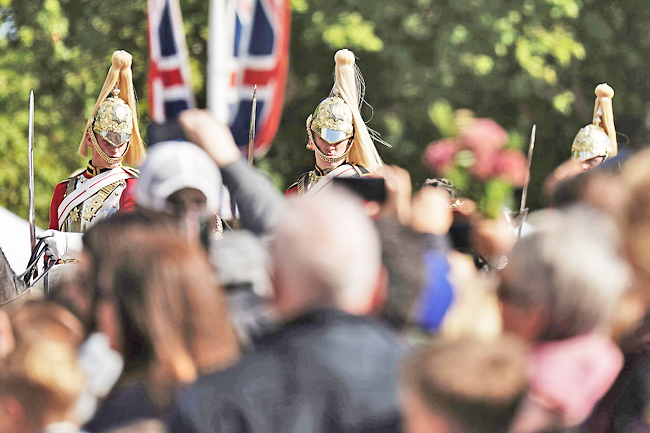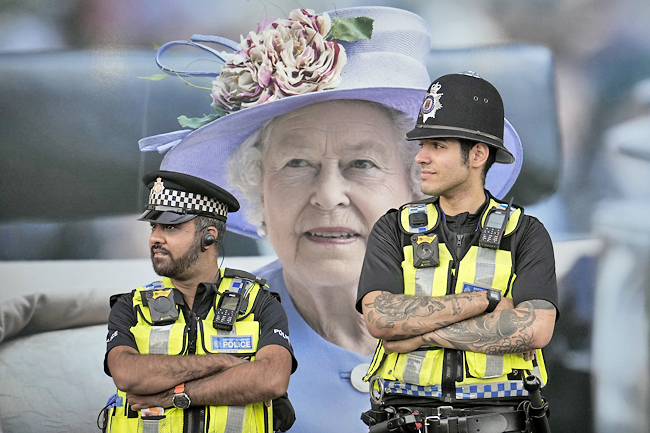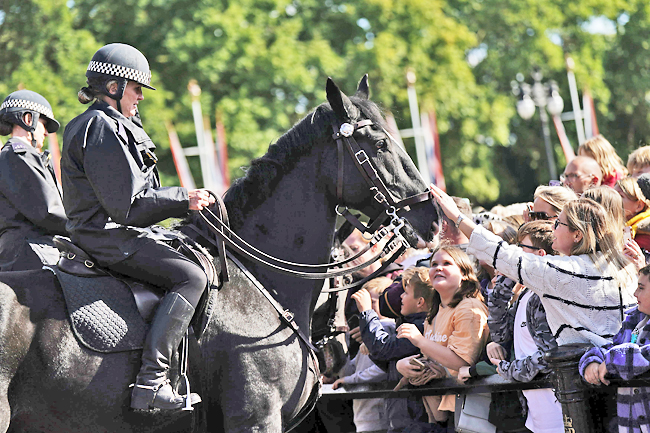LONDON (AP) – The funeral of the only monarch most Britons have known involves the biggest security operation London has ever seen.
Mayor Sadiq Khan said yesterday’s state funeral for Queen Elizabeth II was an “unprecedented” security challenge, with hundreds of thousands of people packing central London and a funeral guest list of 500 emperors, kings, queens, presidents, prime ministers and other leaders from around the world.
“It’s been decades since this many world leaders were in one place,” said Khan. “This is unprecedented… in relation to the various things that we’re juggling.”
“There could be bad people wanting to cause damage to individuals or to some of our world leaders,” Khan told The Associated Press on Sunday.
“So we are working incredibly hard – the police, the security services and many, many others – to make sure the state funeral is as successful as it can be.”
Metropolitan Police Deputy Assistant Commissioner Stuart Cundy said the “hugely complex” policing operation is the biggest in the London force’s history, surpassing the London 2012 Olympics.



More than 10,000 police officers were on duty yesterday, with London bobbies supplemented by reinforcements from all of Britain’s 43 police forces.
Hundreds of volunteer marshals and members of the armed forces acted as stewards along the processional route.
They are just the most visible part of a security operation that is being run from a high-tech control centre near Lambeth Bridge, not far from Parliament.
Street drains and garbage bins were searched and sealed. There were police spotters on rooftops, sniffer dogs on the streets, marine officers on the River Thames and mounted police on horseback.
Flying drones over central London was temporarily banned, and Heathrow Airport grounded scores of flights so that aircraft noise does not disturb the funeral service.
Authorities faced the challenge of keeping 500 world leaders safe, without ruffling too many diplomatic feathers. Presidents, prime ministers and royalty gathered offsite before being taken by bus to the abbey – though an exception was made for United States (US) President Joe Biden, who arrived in his armoured limousine, known as ‘The Beast’.
Another challenge was the sheer size of the crowds gathering around Westminster Abbey and along the route the coffin travelled after the funeral, past Buckingham Palace to Hyde Park. From there, it was taken by hearse about 32 kilometres to Windsor, where another 2,000 police officers were on duty.
The queen was interred in St George’s Chapel at Windsor Castle alongside her husband Prince Philip, who died last year aged 99.
Police deployed more than 36 kilometres of barriers in central London to control the crowds, and transit bosses were preparing for jam-packed stations, buses and subway trains as one million people flooded the ceremonial heart of London.
Subways ran later than normal and train companies added extra services to help get people home.
While many mourn the queen, support for the monarchy is far from universal. Police have already drawn criticism for arresting several people who staged peaceful protests during events related to the queen’s death and the accession of King Charles III.
Cundy said it had been made clear to officers that “people have a right to protest”.
“Our response here in London will be proportionate, it will be balanced, and officers will only be taking action where it is absolutely necessary,” he said.
Metropolitan Police Commissioner Mark Rowley said the goal was to keep the event safe, “and try to do it in as unobtrusive a way as possible, because this is obviously a solemn occasion”.





